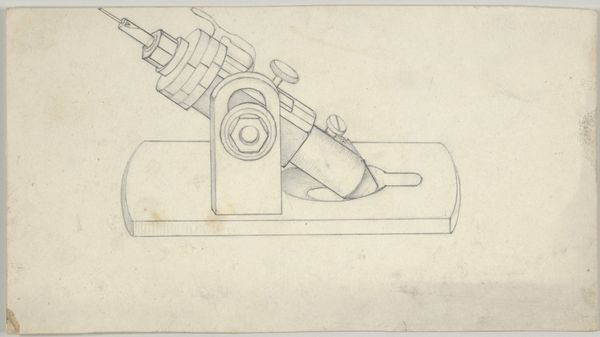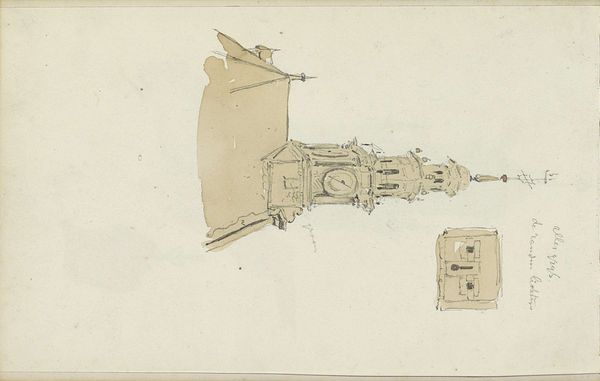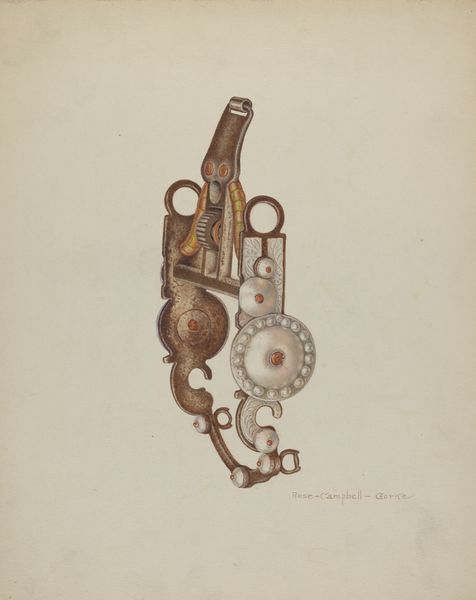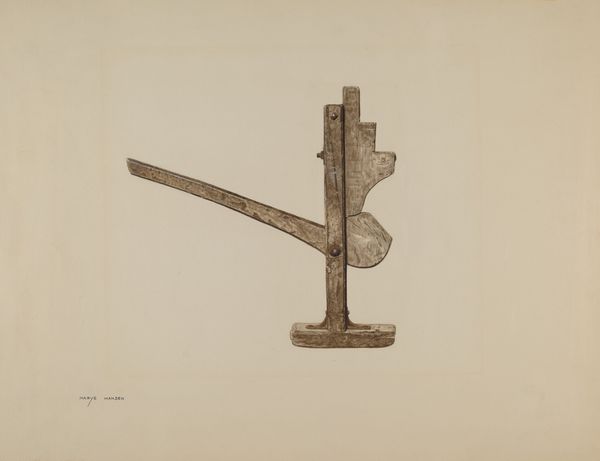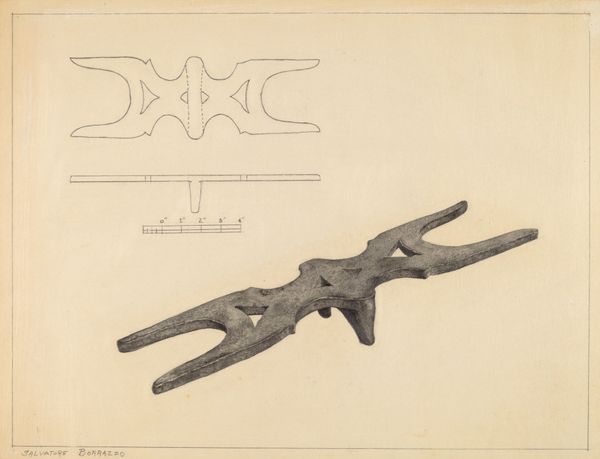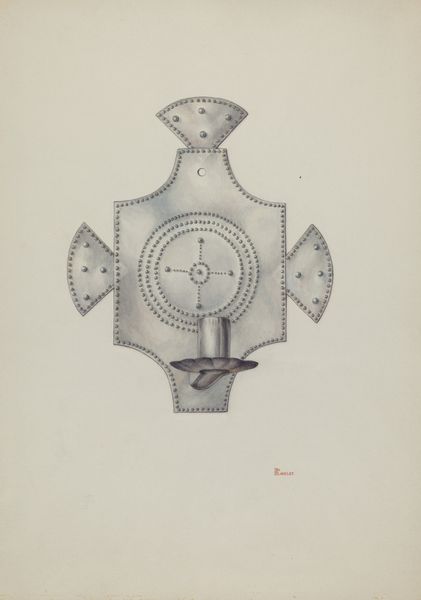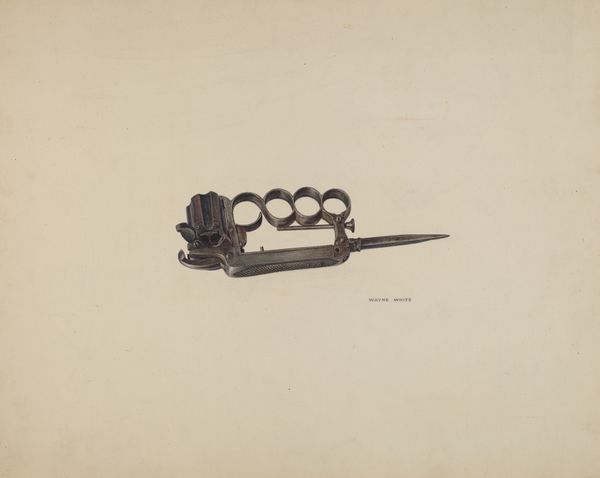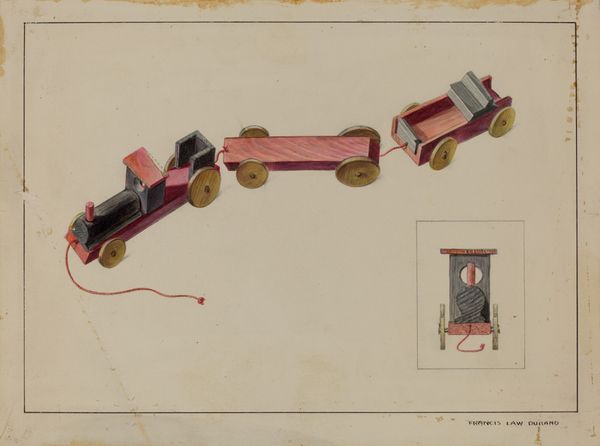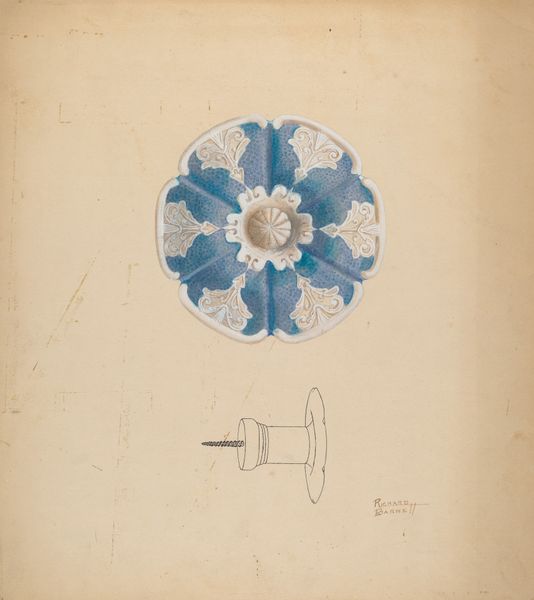
drawing, graphite
#
drawing
#
graphite
#
academic-art
#
graphite
#
watercolor
#
realism
Dimensions: overall: 22.9 x 30.5 cm (9 x 12 in.)
Copyright: National Gallery of Art: CC0 1.0
Editor: Right, let's have a look at this work, 'Ivory Carpenter's Plane', created around 1937 by James M. Lawson. It appears to be made with graphite and drawing on what seems like aged paper. I must say, it’s such an odd subject – a carpenter's tool – but the details are just fascinating. How do you interpret this work? Art Historian: It's indeed a captivating choice of subject. At first glance, one could consider this work as an artifact of a bygone industrial era. The early 20th century was a time of huge industrial advancements alongside deep economic hardship and increasing political awareness among labourers. How do you think an object like a carpenter’s plane might fit into a socio-political reading? Editor: Interesting! Well, at that time period, it represents skilled labor but with perhaps a bit of nostalgia? Maybe also the impact of industrialisation, and perhaps even resistance towards modern techniques? The care taken to depict it almost feels like honoring craftmanship... Art Historian: Precisely. There's a certain reverence in the meticulousness. But think also about institutions. Why create art of this subject and what role would academic-style realism play in art education? Would realism promote a particular view? Who would these artworks reach and who would create them? Editor: Ah, so, if the artist’s academic realism could impact whose stories get told… I see now how this quiet image speaks about artistic agency as well as institutional validation of an older traditional order. I’m taking some of that social awareness and politics! Thanks! Art Historian: Always remember the complex interaction between the art and its viewers; even a simple drawing holds layered meaning in terms of social forces and beliefs when looked at more deeply.
Comments
No comments
Be the first to comment and join the conversation on the ultimate creative platform.
